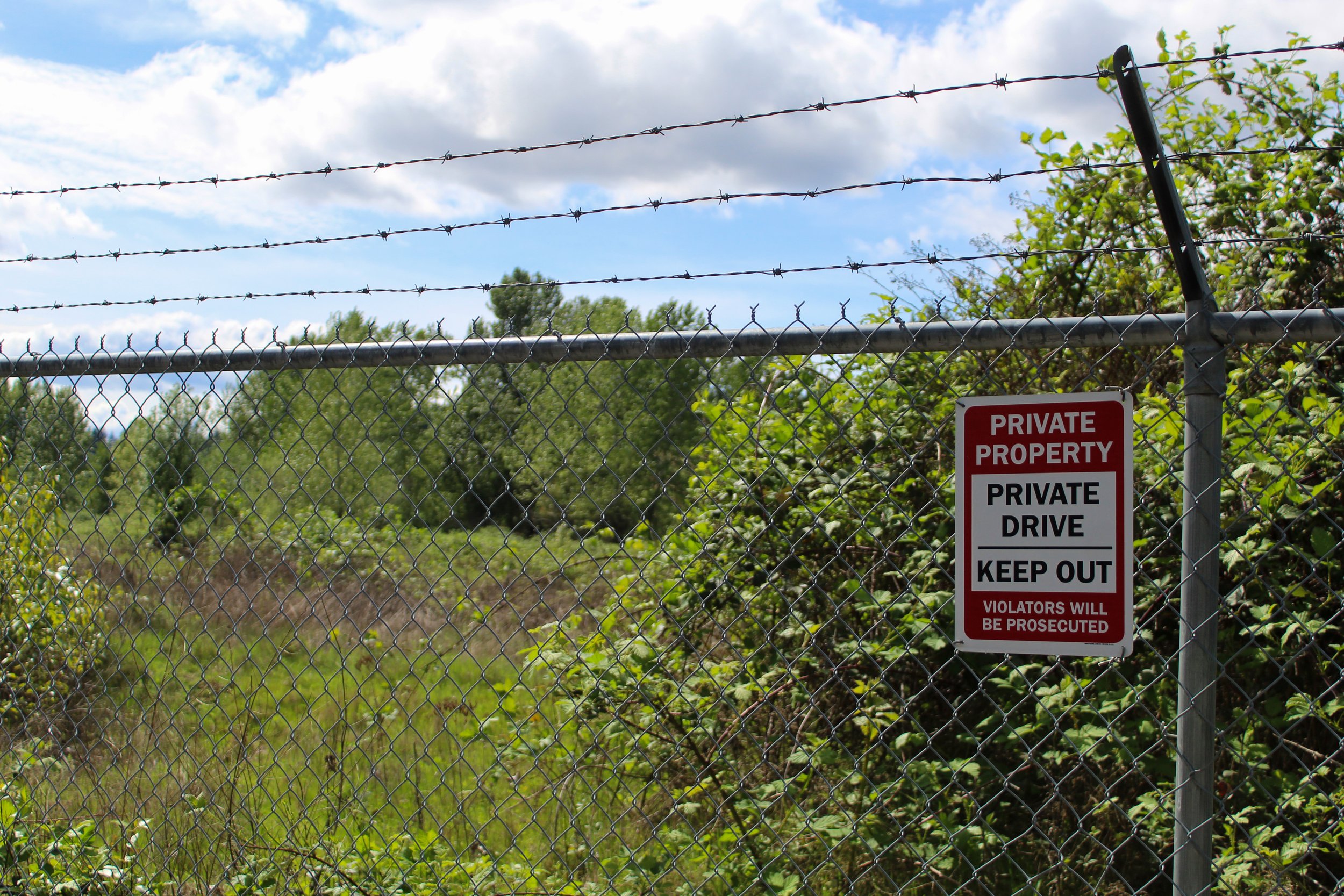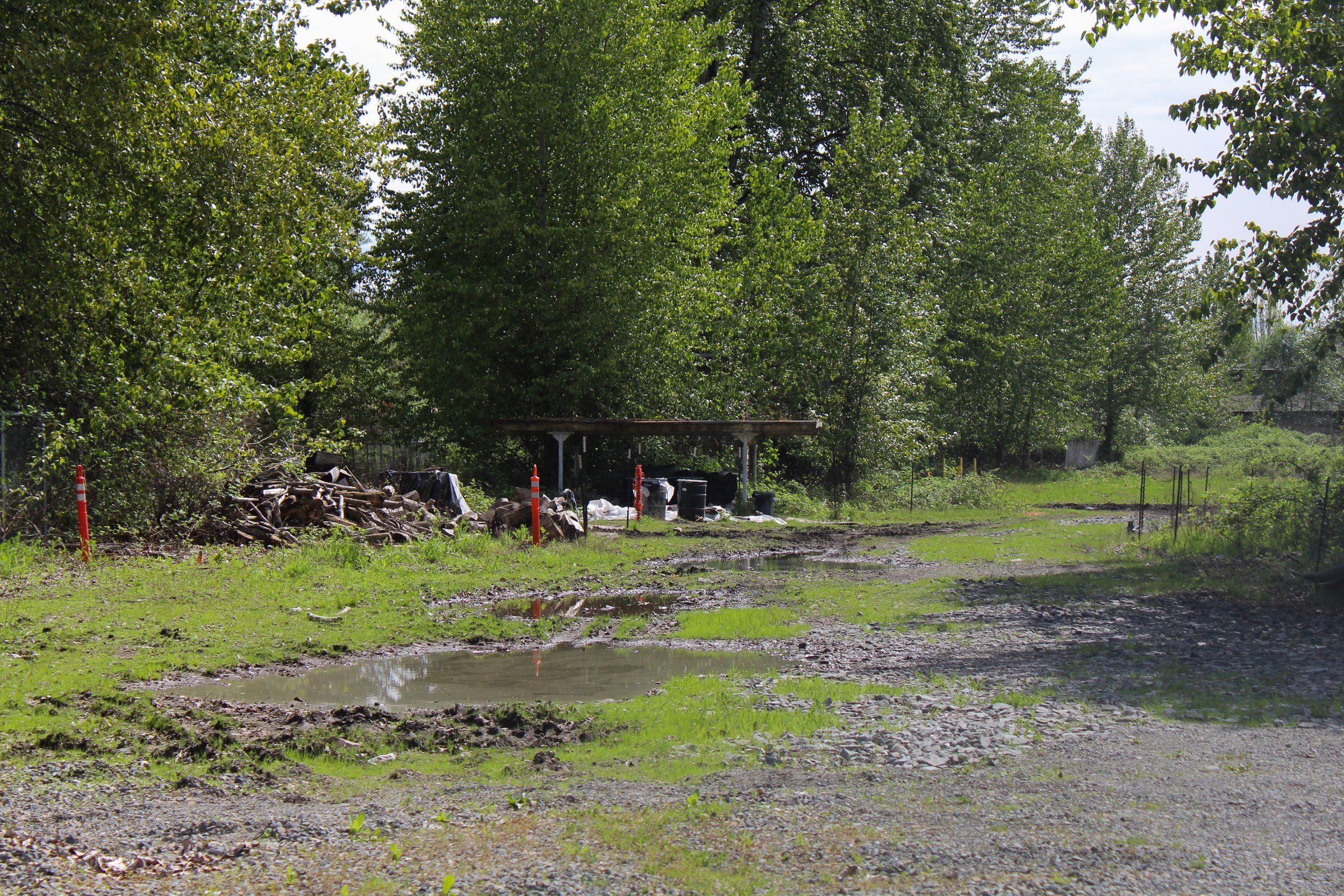For the Love of the Lake
A contaminated shoreline property on Lake Washington faces an uncertain future as the slow process to rid the soil and water of toxic chemicals lurches on.
Lake Washington and its surrounding houses by the Boeing facility. Even though the lake has a welcoming feeling, its polluted waters tell another story. // Trinity Shaffer
June 14, 2023
Story by Megan Strom
For the last 15 years, the last empty piece of property on Lake Washington has sat untouched. From 1916 to 1969, the Quendall Terminals took the shape of a creosote manufacturing plant, then a crude oil storage facility from 1969 to 1983. Chemicals and toxins from all those years have found their way deep into the soil, making it extremely polluted.
Around 7% of Americans, or 24 million people, live within one mile of a Superfund site, according to the Environmental Protection Agency (EPA). Superfund sites are heavily polluted and contaminated areas that can be hazardous to humans and natural ecosystems. They are designated as high-priority cleanups for the EPA.
The Washington State Department of Ecology has estimated that the state is home to over 13,000 contaminated sites. Large industrial processes in the Pacific Northwest have resulted in many contaminated sites across the Puget Sound.
Standing outside the 22-acre site, behind a chain link fence, the Terminals are shrouded in greenery that covers the soil floor. The problematic past of this area gives way to a bland, vacant lot. The blocked-off site is sandwiched tightly between the outdoor practice field of the Virginia Mason Athletic Center and a fleet of waterfront condos.
The EPA is currently in the slow process of collecting samples to understand the full extent of the contamination and proposed a cleanup to make the Terminals habitable for humans. An ownership group called Lake Washington East, including JH Baxter and Altino Properties, as well as Burlington Northern Sante Fe Railway and Puget Sound Energy, are just some of the entities on the hook for the $106 million project that was set to begin in the fall of 2021.
Creosote is a chemical used to treat and preserve wood and was the primary product manufactured at the Quendall Terminals site from 1916 to 1969. Just south of the plant on the shore of the lake was Barbee Mill, which provided the logs for creosote treatment. A railway line ran through the site. During World Wars I and II, creosote and treated logs were in high demand for the construction of shipyard docks and piers.
“It was a really dirty operation, but it was part of the fabric of the Northwest,” said Bill Dunbar, a spokesperson for EPA Region 10. “If you look at it without the environmental impacts of those kinds of operations, it makes all the sense in the world to have a place right there on the shores of Lake Washington.”
From 1969 to 1983, it was a storage site for oil and waste, and from 1975 to 2009 it was a log sorting and storage yard. Both crude oil and creosote are thick liquids, so unless they are physically removed from the ground, the petroleum will remain in the soil. Since the Terminals’ most recent activity in 2009, the property has been void of industry but rich in toxicity. The property is closed to prevent human exposure to the contamination.
PHOTO: A map of the Quendall Terminals showing the polluted areas and the surroundings on the shore of Lake Washington. //Trinity Shaffer
Passed in 1972, the Clean Water Act set quality and pollution control standards for American waters. Though this was a big step forward for environmental stewardship, it also meant there were now areas all over the country that did not meet those standards. The Quendall Terminals site was placed on the EPA's Superfund National Priorities List in 2006.
After assessing potential consequences through soil and water samples, the official EPA plan as of 2020 is to clear the pollutants from the Terminals. This includes dredging contaminated soil to be disposed of off-site and using developing technologies that can burn away the petroleum products underground.
“Taking a couple different approaches to that [process], some of it is to move it, some of it uses new technology, some of it is to capture it and to keep it away from Lake Washington,” Dunbar said.
However, the main obstacle in the way of this project is the price tag, which is estimated to be $106 million.
"There is no magic formula to do it," said Robert Cugini, the current owner of the land whose family has owned the property since 1971. "It ends up being negotiated between the lawyers of the potential responsible parties."
There are multiple potentially responsible parties (PRPs) that the EPA has pinned down for the contamination at Quendall Terminals. IIt is up to them to work out how the cleanup will be funded.
Vanessa Dolbee, Planning Director for the City of Renton, was the Project Manager of the Quendall Terminals site starting in 2009.
“Trying to look into that crystal ball and determine what the future would look like after they clean up the site, so we could then evaluate the development impacts on that future site,” Dolbee said. “It was a little bit ‘cart before the horse’ in terms of doing the environmental evaluation.”
A trashed sign describing the proposed land use action to clean up the dredged sediments. //Trinity Shaffer
The City of Renton has chosen to create a redevelopment agreement for the land after the EPA is satisfied with the cleanup efforts, which still have yet to begin. The redevelopment plan includes apartment buildings with retail space on the ground floor, a public park, and as long as the area is safe for human habitation, a public trail along the waters of the lake. It may be many more years until construction is able to begin with the EPA’s permission.
Even though the Quendall Terminals cleanup has been under the EPA’s jurisdiction since 2006, there is still a lot more work to be done – according to Dunbar, the team is still relatively early in the process.
Most recently, a study is being conducted by the EPA to test some of the technology intended for use in the cleanup, and a draft report from the PRPs is currently in the works. The waiting and negotiating continues, and the Quendall Terminals remain empty.
Megan Strom is a junior at Western studying urban sustainability at the College of the Environment.
Trinity Shaffer is an environmental studies student using photography as a way to capture the issues and beauties of our environment.





